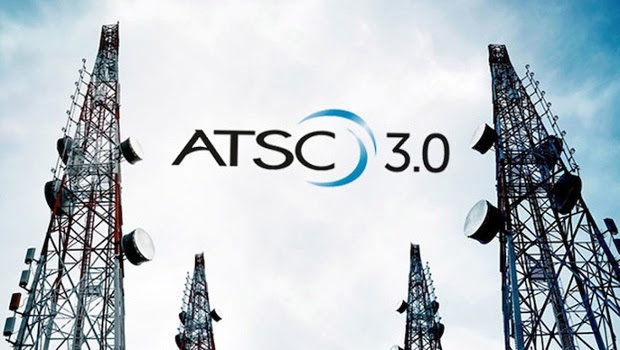Broadcasters Tout NextGen TV Progress at CES 2022
The Pearl TV consortium highlighted the launch of new ATSC 3.0 sets, faster than expected set sales, new test data on automotive applications, and efforts to speed up the development of NextGen TV sets

LAS VEGAS—The Pearl TV coalition of U.S. broadcasters that is spearheading the transition to NextGen TV services highlighted a number of new developments at CES 2022 that illustrate the progress ATSC 3.0 is making.
Those include: new ATSC 3.0 capable sets from Hisense; new field test data from Sony Electronics at the “Motown 3.0 Open Test Track” in Detroit, Mich. showing the promise of delivering ATSC 3.0 broadcasts to cars; and MediaTek signing a test agreement with Pearl TV that will simplify and speed up the process of bringing new ATSC 3.0 sets to market.
The broadcasters also reported that NextGen TV broadcasts are now available in more than 40 markets covering 45% of the U.S. population and that those 3.0 signals are expected to reach 75% of U.S. households by summer.
In addition Pearl TV cited data from the Consumer Technology Association (CTA) showing that 2021 sales of NextGen TVs more than tripled last year’s original forecast, with 3 million units shipped by manufacturers. CTA is projecting 2022 sales of 4.5 million units, as the number of TV makers endorsing the hybrid over-the-air and over-the-top ATSC 3.0 technology continues to grow.
“NextGen TV has garnered remarkable traction in a relatively short time since the first commercial launch in early 2020, proving that watching TV is more than just one of America’s favorite pastimes. Television is our source for news, entertainment and access to our communities and the broader world,” stated Anne Schelle, managing director of Pearl TV. “NextGen TV enhances broadcast TV and is a critical technology to the preservation of free, over-the-air local news. We’re very happy to be back at CES, showcasing NextGen TV’s role at the forefront of the evolution of broadcast television and the changes in consumer perception of it."
The launch of new ATSC 3.0 capable TV sets by Hisense was one of the announcements at the market that Pearl TV highlighted to show the market momentum of NextGen TV.
Hisense is integrating NextGen TV technology into select new Smart TV models, bringing more broadcast options and upgrades to viewers who are ready for 4K over-the-air content and the latest upgrades. In Q3 of 2022, Hisense will introduce the U9H, U8H and U7 models starting at $799.99 to the retail market. Hisense joins other manufacturers—Sony, Samsung and LG Electronics—which already, combined, have more than 70 models available at retail.
Get the TV Tech Newsletter
The professional video industry's #1 source for news, trends and product and tech information. Sign up below.
“As Hisense receivers equipped with NextGen TV hit store shelves later this year, consumers will have more model and pricing choices, on top of an improved audio and visual experience,” stated Schelle. “Hisense pushes the boundaries of innovation that is reflective of the value of what NextGen TV delivers.”
In addition MediaTek has signed a test agreement with Pearl TV to speed the implementation of the ATSC 3.0 standard among leading television brands.
It will offer a total solution that includes ATSC 3.0 demodulator (MT9100), a comprehensive Smart TV system on chip (SoC) family that ranges from entry 4K to premium 8K, and a ready-to-go software stack for both Android and Linux, the companies said. This highly-integrated ATSC 3.0 solution for Smart TVs will enable television brands to bring sets to market faster with reduced cost and development risks.
“By embracing NextGen TV, MediaTek reaffirms its commitment to enabling the most forward-thinking standards and technologies,” stated Alfred Chan, vice president of TV and smart home business unit at MediaTek. “We are thrilled to be working with a diverse network of broadcasters, engineers, and gifted innovators to help advance this technology and help put it in more consumer living rooms, kitchens, garages, dorm rooms—wherever people gather to enjoy news and entertainment.”
Also at CES, new test data from Sony and the Motown Test Track highlighted the promise of automotive applications for NextGen TV.
The data showed that Sony Electronics successfully demonstrated robust automotive services using its CXD2885 chip named “CLOVER” on the Test Track in summer of 2021, proving that ATSC 3.0 can indeed provide service to both automobiles and stationary devices simultaneously, and deliver seamlessly hand off service.
The details are expected to be laid in an upcoming technical paper but some of the milestones achieved include:
- Audio/visual media files transmitted and delivered to devices while traveling at highway speeds
- Transmitters in separate markets working in tandem provided a seamless transition of audio/visual content
- Successful file reception completed with multiple antennas
- Antenna diversity along with a Maximum Ratio Combining algorithm improves probability of recovering service in low signal energy conditions
“Sony’s results prove that transformative advances in core TV broadcast technologies made possible by ATSC 3.0 give terrestrial broadcasters new ways to deliver infotainment and IP data services to an infinite number of vehicles—and the displays and devices in them—simultaneously, whether on-the-go or in the garage. As the automotive industry aims to be more like the tech and telecom industries, where they can secure customers with services and downloadable features that improve over time and generate recurring revenues, they will be interested to follow the developments coming out of the Motown 3.0 Test Track,” Schelle said.
More details from the CES 2022 press conference regarding plans by Sinclair and others for ATSC 3.0 technologies in 2022 are available here.
George Winslow is the senior content producer for TV Tech. He has written about the television, media and technology industries for nearly 30 years for such publications as Broadcasting & Cable, Multichannel News and TV Tech. Over the years, he has edited a number of magazines, including Multichannel News International and World Screen, and moderated panels at such major industry events as NAB and MIP TV. He has published two books and dozens of encyclopedia articles on such subjects as the media, New York City history and economics.

